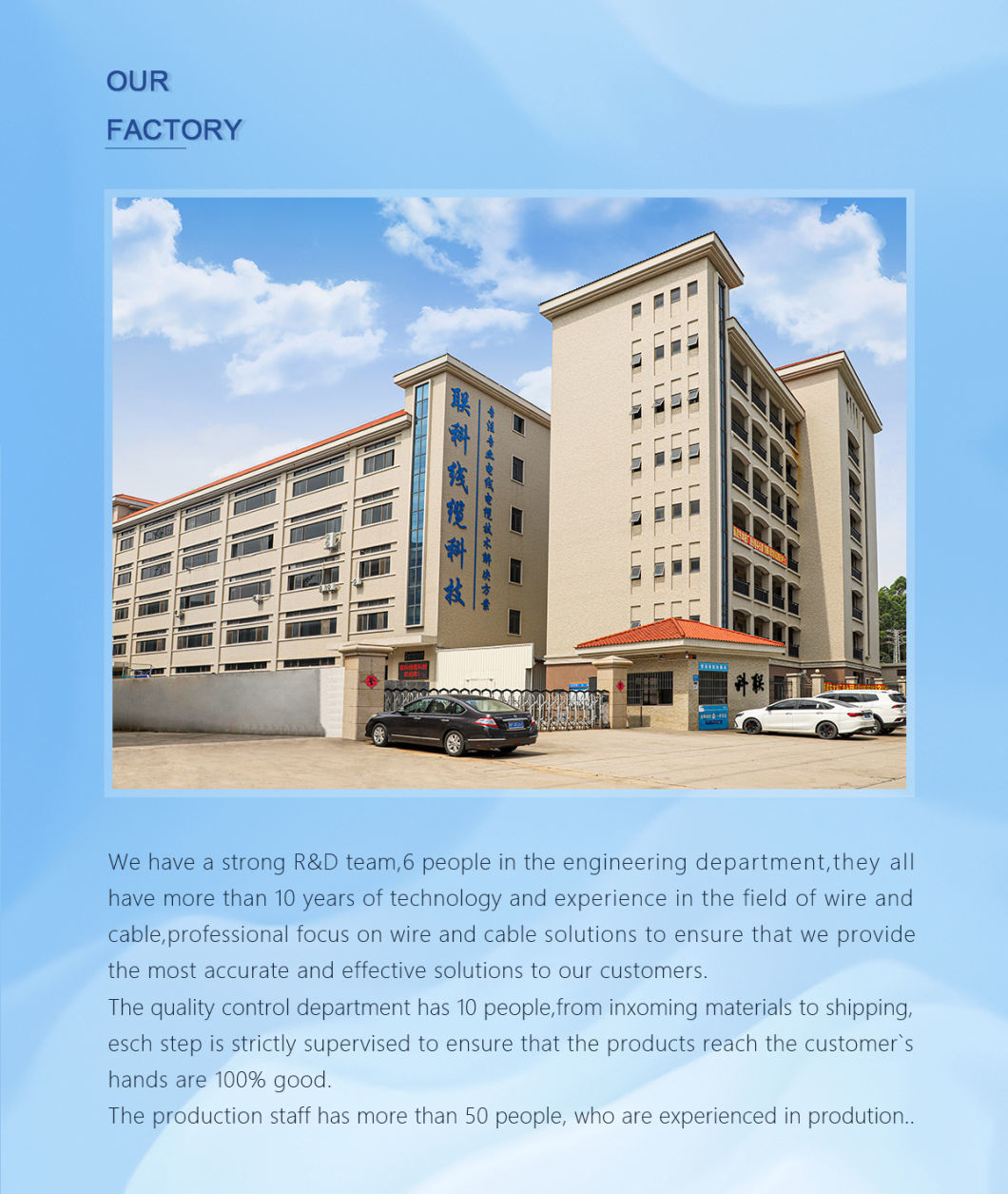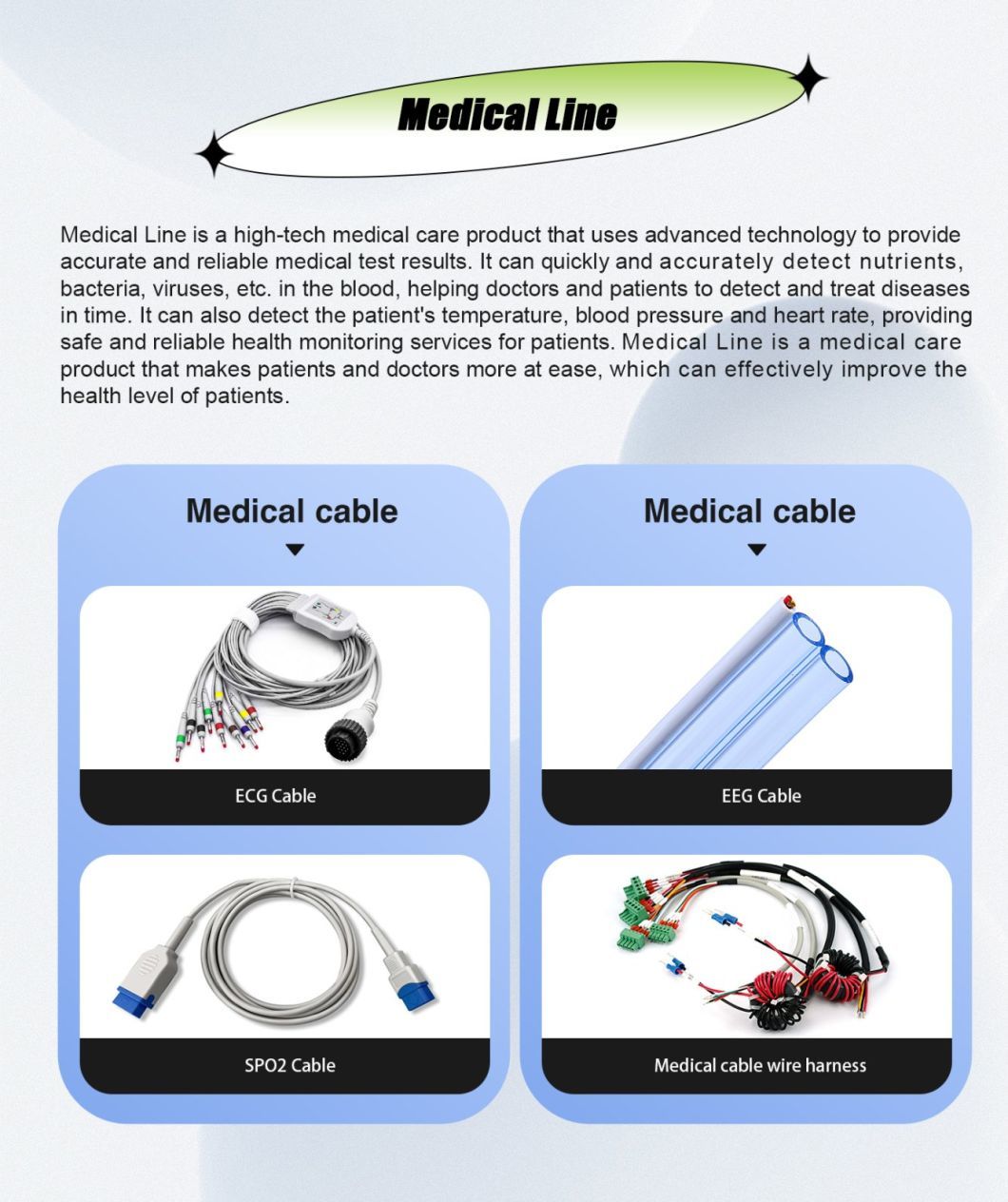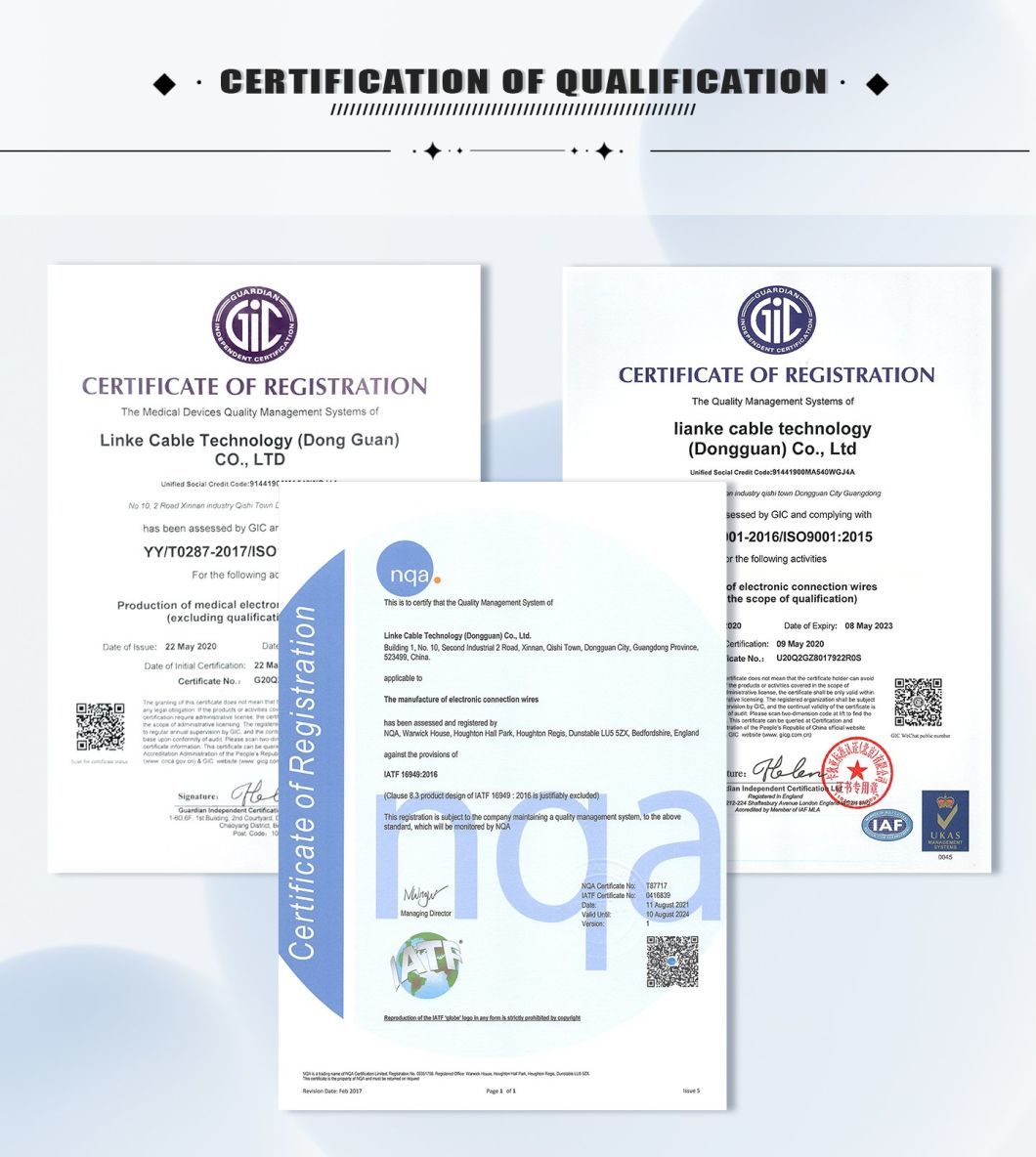Medical cable refers to a type of cable specifically designed and
used in medical applications. These cables are used
to transmit signals or power in various medical devices and
equipment, such as diagnostic imaging machines,
patient monitoring systems, surgical instruments, and medical
sensors. Medical cables are constructed with materials
that meet the strict regulatory requirements and standards for
medical equipment. They are designed to provide reliable
and accurate transmission of electrical signals or power while
ensuring patient safety and compliance with medical device
regulations.
These cables often have specialized features to withstand the
unique environmental conditions encountered in medical settings,
such as resistance to sterilization processes, flexibility for easy
routing, and shielding to prevent interference from external
sources.
Overall, medical cables play a crucial role in ensuring the proper
functioning and safe operation of medical devices, connecting
various components within the medical equipment and facilitating
the transmission of vital information for diagnosis, treatment,
and patient monitoring.
use:
Used for internal configuration cables of various high-end medical
equipment and communication cables of external medical equipment.
type:
1. There are various types of special-shaped wires such as round,
flat, square, etc.
2. The material is TPE, TPU, environmentally friendly PVC and other
covering materials.
3. The internal structure can be designed according to customer
requirements, using KEVLA or (Technora) aramid fiber to enhance the
performance of the wire.
Features:
1. High temperature resistance, corrosion resistance, dirt
resistance, easy to clean, novel and unique appearance.
2. Good insulation, strong conductivity, beautiful sound quality,
stable signal transmission, good anti-noise effect and strong
anti-interference.
3. The wire is soft, feels good and is not easy to tangle.
4. Small structure, novel appearance, easy to carry.
5. It has strong tensile strength, high swing times, strong ability
to withstand the invasion of chemicals such as gasoline, alcohol,
cosmetics, excellent weather resistance and long service life.
6. Comply with RoHS, REACH, California 65 standard and SONY-GP and
other related environmental protection requirements.
7. Reasonable structural design and the use of high-quality
materials make the product easier to peel and weld, with higher
reliability and processing type.
8. Can carry out supporting design and development according to
customer product characteristics and customer requirements.
Medical equipment transmission cables are high-performance wires or
cables designed specifically for medical devices, used for
transmitting data and electricity. They have the following
characteristics:
1. Safety:
Medical equipment transmission cables comply with strict safety
standards such as ISO 13485, CE marking, etc., ensuring the safety
of patients and operators.
2. Reliability:
These cables can withstand long-term use and repeated disinfection,
maintain stable performance, and ensure the reliable operation of
medical equipment.
3. Accuracy:
Medical equipment transmission cables maintain a high degree of
accuracy in transmitting data and power to meet the precise
requirements of medical equipment for signal transmission.
4. Corrosion resistance:
Due to the presence of disinfectants and other chemicals in the
medical environment, these cables have corrosion resistance to
prevent damage caused by chemical corrosion.
5. Environmental friendliness:
Medical equipment transmission cables usually comply with
environmental standards and do not contain harmful substances to
reduce their impact on the environment and patients.
6. Compatibility:
These cables need to be compatible with various medical devices,
including monitoring equipment, surgical equipment, imaging
equipment, etc., to meet different medical application needs.
7. Resilience and Durability:
Medical equipment transmission cables have a certain degree of
toughness and durability, and can adapt to stretching, bending, and
pressure in medical environments.
In short, medical equipment transmission cables are an important
component of medical equipment, and their design and manufacturing
need to meet strict quality and safety requirements to ensure the
normal operation of medical equipment and the safety of patients.

















